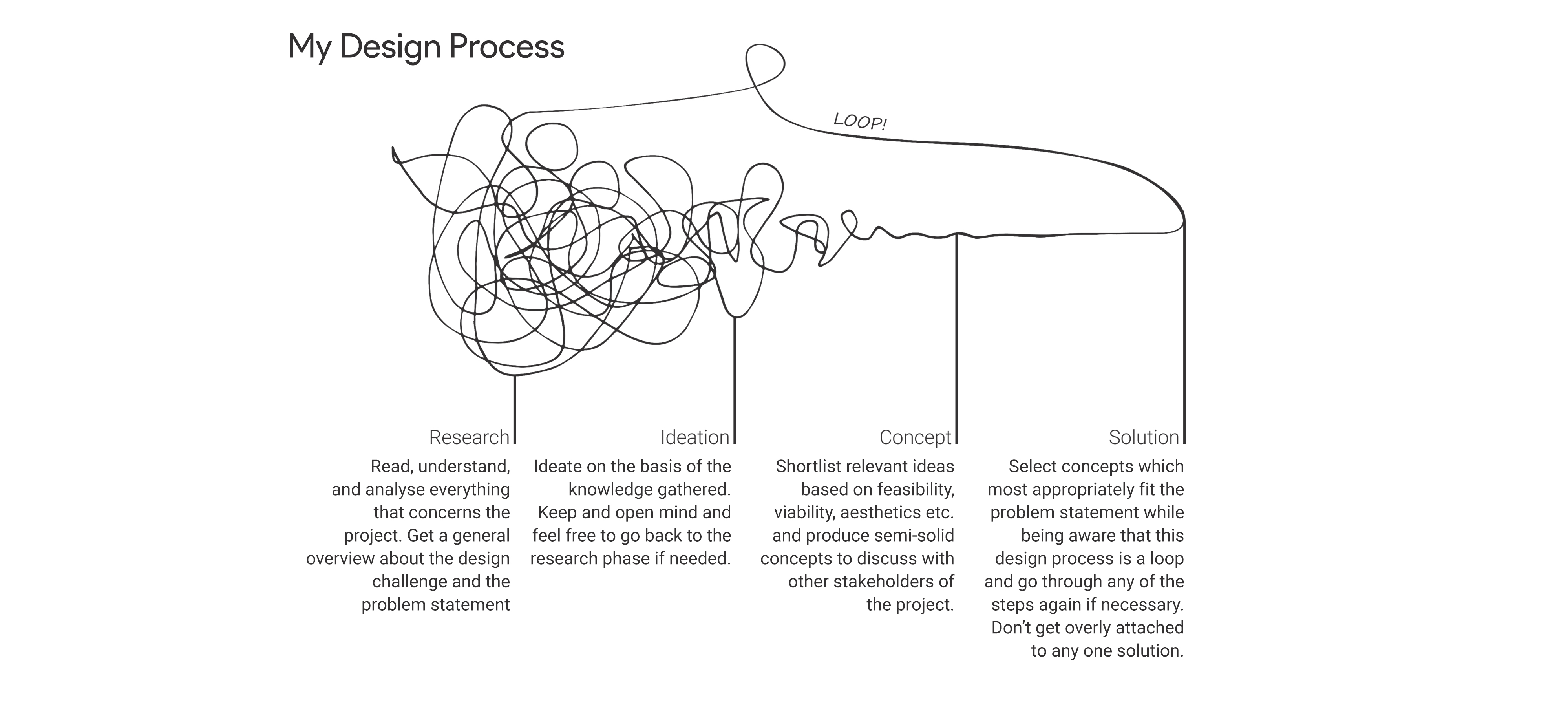my design process: 2019
February 5, 2019
I can explain my design process in one sketch:

- It begins with Research. A lot of research. And then some more.
A major part of research is driven by observation, identification of the problem, the solution people currently use, detailed study of existing solutions, is there a problem with the ‘solution’?, what can be done to find a better solution?, is there really a need for another solution? or am I just trying to push on a wall? - Following a thorough research, comes the Ideation phase. This is where I throw around as many ideas as possible. It usually starts with the existing ones, some mixing and matching, some thesis and synthesis, and sometimes, I am blessed with a super creative light bulb moment.
If I’m designing a product or even a logo, ideation is the phase where the magic happens and where the fun lies.I’ve learnt through experience to not get too attached to your ideas. You might think that an idea is brilliant, but if you show it to 10 people, 9 might think it’s crap. Do not let your ego get in the way when this happens and take this as constructive criticism on your way to make something better. - Getting your work reviewed is vital and that should not be only from fellow designers. I show my ideas even to people who have no idea of what good design is and ofcourse to the end-users. I tell them to honestly tell me what like and dislike about the ideas and if they would have followed a different approach. Sometimes, they are the one who end up giving the best insights.
- This is followed by shortlisting concepts. If I have sketched out a hundred ideas, it obviously isn’t possible in limited time to test all of them. Taking those reviews and recommendations, considering pros and cons of my designs, I cut down all the low-grade ideas. I keep cutting down until I am left with a few high-quality, innovative, user friendly, out-of-the-box, as well as feasible ideas.
- Depending on what I’m working on, I like to make the ideas tangible. Making prototypes is the fun and playful part of design. I like playing around with household items and using my hands to build stuff. This playing around often results in a live synthesis of ideas and gives pretty good insights about the manufacturing process that should be used. If its a logo or brand I’m working on, this part can be viewed as converting your sketches and ideas to objects in Photoshop or Illustrator and matching-mismatching them with things on the artboard.
- At the end, I repeat everything, skim through the entire process again. The ideal design process is endless. You can never achieve an ‘ultimate’ or ‘perfect’ solution. With ever iteration, you can only get closer to it. So, as you can see in the illustration, I added a loop. Going over the entire process again allows me to identify any mistakes I’ve made along the way and make improvements where necessary and applicable.
That is the process I like to say I follow. The reality is undoubtedly much more jumbled up.

